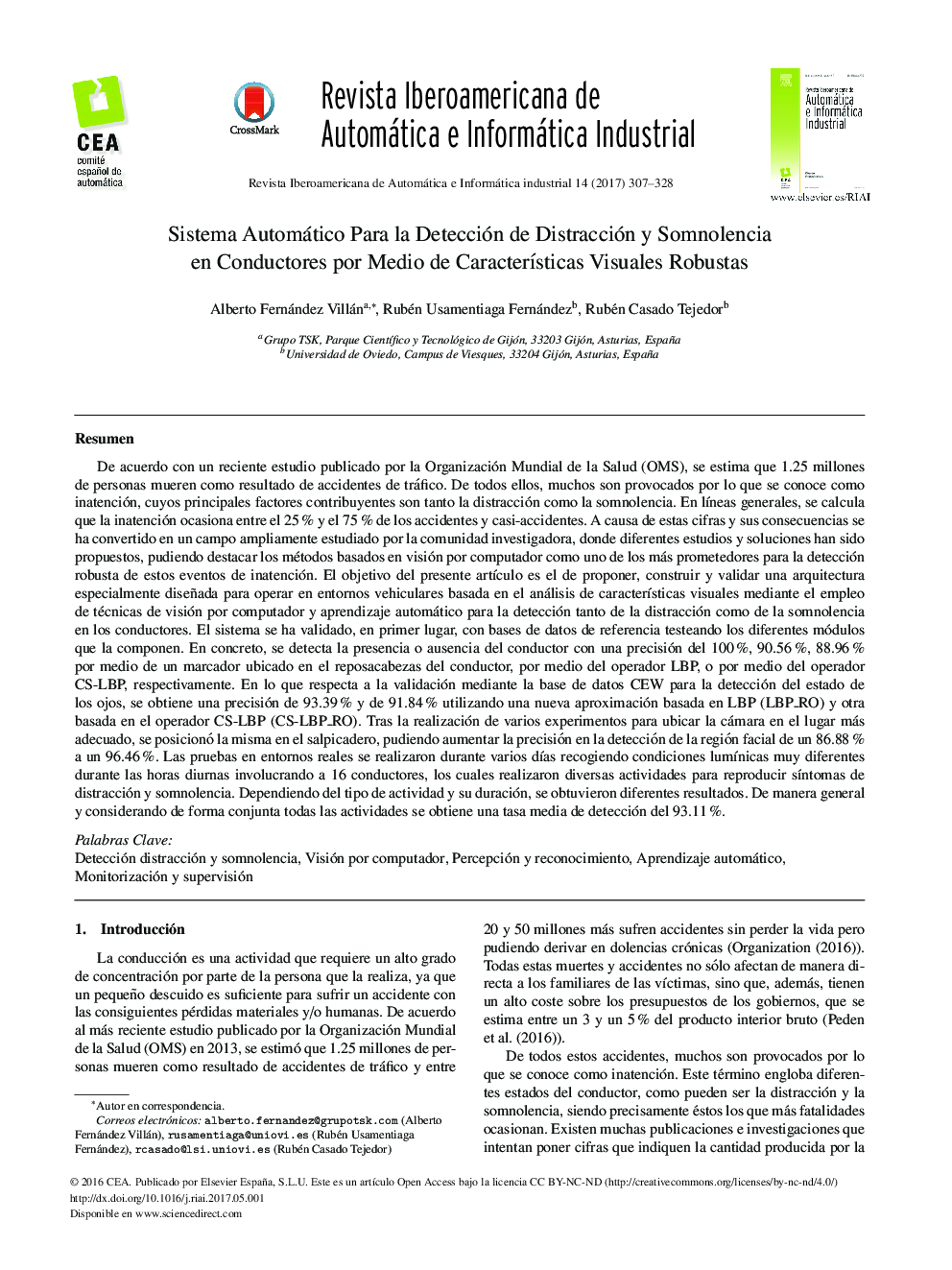| Article ID | Journal | Published Year | Pages | File Type |
|---|---|---|---|---|
| 8050517 | Revista Iberoamericana de Automática e Informática Industrial RIAI | 2017 | 22 Pages |
Abstract
According to the most recent studies published by the World Health Organization (WHO) in 2013, it is estimated that 1.25 million people die as a result of traffic crashes. Many of them are caused by what it is known as inattention, whose main contributing factors are both distraction and drowsiness. Overall, it is estimated that inattention causes between 25% and 75% of the crashes and near-crashes. That is why this is a thoroughly studied field by the research community, where solutions to combat distraction and drowsiness, in particular, and inattention, in general, can be classified into three main categories, and, where computer vision has clearly become a non-obtrusive effective tool for the detection of both distraction and drowsiness. The aim of this paper is to propose, build and validate an architecture based on the analysis of visual characteristics by using computer vision techniques and machine learning to detect both distraction and drowsiness in drivers. Firstly, the modules have been tested with all its components independently using several datasets. More specifically, the presence/absence of the driver is detected with an accuracy of 100%, 90.56%, 88.96% by using a marker positioned onto the headrest, the LBP operator and the CS-LBP operator, respectively. Regarding the eye closeness validation with CEW dataset, an accuracy of 93.39% and 91.84% is obtained using a new method using both LBP (LBP_RO) and CS-LBP (CS-LBP_RO). After performing several tests, the camera is positioned on the dashboard, increasing the accuracy of face detection from 86.88% to 96.46%. In connection with the tests performed in real-world settings, 16 drivers were involved performing several activities imitating different sings of sleepiness and distraction. Overall, an accuracy of 93.11%is obtained considering all activities and all drivers.
Keywords
Related Topics
Physical Sciences and Engineering
Engineering
Control and Systems Engineering
Authors
Alberto Fernández Villán, Rubén Usamentiaga Fernández, Rubén Casado Tejedor,
